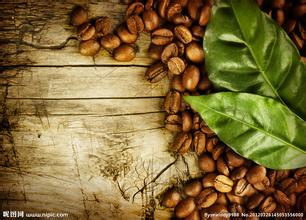Tippi Katim Coffee characteristics, taste and flavor description of manor production area
Tippi Katim Coffee characteristics, taste and flavor description of manor production area
I heard that the old variety of coffee trees in Yunnan was originally reduced from 50000 mu to 5000 mu, but now there are no 500 mu left. do the old varieties really want to become extinct? I was a little surprised to see that the number of hits in this article was more than 2000. I was a little surprised to look back at this article written in 2012, for fear of misleading everyone because of the lack of what I saw. In fact, this article is only a situation five years ago and how I felt at that time. Later, I went to Yunnan every year in the past few years, and the development of the producing area is also better than one year. Interested friends, please refer to the latest trip to Yunnan in 2016. Several hills near them are coffee gardens in their village, but there are only two mu of old varieties left in the village. Fortunately, this family is well managed, looks healthy, and is still in the harvest period. I saw the ripe red fruit of coffee. After discussing with the owner, we decided to buy back 10 kilograms of raw beans and taste them. The fruits just picked at the end of last year are still preserved in the warehouse in the form of shell beans. The next morning we shelled and processed together. After shelling, there were 18.5 kilograms of raw beans of different sizes. There were many broken beans, adzuki beans and bad beans. After drying, there were still many defective beans, so we chose them by hand on the spot. After the final selection, there are still 9 kilograms of qualified ones left-- and by this time most of the morning has passed. Of course, if it is used to make instant coffee or general commercial beans, high-yield catimor is a good choice, but if you want to look for Yunnan specialty coffee, then the old variety of iron pickup has become the first choice because of its congenital excellent genes. Therefore, this trip to Yunnan also followed the trail of the old varieties. But the reality is really cruel. Before going, Brother Zou told me that there was an old variety in his relative's house, but what he saw excitedly was a wild growing coffee forest, which belonged to his aunt. Because his aunt was too old and did not have the strength to replant and renovate-- these old varieties survived, but the aunt was unable to manage it alone, so the tree was allowed to grow naturally. When ripe to pick some fruit, the so-called new variety actually refers to catimor (Katimo), which is a hybrid of the timor species of the Roberta family and Arabica. Compared with the old variety, it lacks rich aroma and flavor, and has a relatively shallow smell of grass and soil, but it has the advantages of resistance to diseases and insect pests, easy management and high yield, and its yield per mu is up to 350kg, which is more than twice that of the old variety.
So when Nestl é succeeded in promoting high-yield new varieties in Pu'er in the 1990s, brown farmers in Baoshan also cut down old varieties and changed them to new ones. With a round of coffee expansion, new varieties are increasing and old varieties are decreasing day by day. Finally, today's situation: the old varieties have almost been cut down, and the little ones that survived are all "old, weak, sick and disabled". Most of the trees are more than 20 years old. Over the years, the output and quality are not as good as they used to be.

Important Notice :
前街咖啡 FrontStreet Coffee has moved to new addredd:
FrontStreet Coffee Address: 315,Donghua East Road,GuangZhou
Tel:020 38364473
- Prev

Sumatran Coffee Flavor description Taste Variety characteristics of production area treatment manor introduction
Sumatran Coffee Flavor description characteristics of Sumatran Coffee production area treatment Manor has a strong taste, with a strong mellow and rich and lively sense of movement, not astringent but not sour, mellow and bitter can be fully revealed. The appearance of Mantenin coffee beans is arguably the ugliest, but coffee fans say that the worse the Sumatran coffee beans are, the better, mellow and slippery they are. Except
- Next

Introduction to the description of taste and flavor in the treatment of Colombian coffee red wine
Description of taste and flavor of Colombian coffee red wine treatment process example 1: peeling the coffee fruit by Pinhalevse peeling machine, fermenting the peeled coffee fruit with 2% Pichia anomala, 2% Saccharomycopsis fibuligera and 2% Aspergillus niger at 40 degrees Celsius for 24 hours, then cleaning with ultrasonic wave
Related
- Detailed explanation of Jadeite planting Land in Panamanian Jadeite Manor introduction to the grading system of Jadeite competitive bidding, Red bid, Green bid and Rose Summer
- Story of Coffee planting in Brenka region of Costa Rica Stonehenge Manor anaerobic heavy honey treatment of flavor mouth
- What's on the barrel of Blue Mountain Coffee beans?
- Can American coffee also pull flowers? How to use hot American style to pull out a good-looking pattern?
- Can you make a cold extract with coffee beans? What is the right proportion for cold-extracted coffee formula?
- Indonesian PWN Gold Mandrine Coffee Origin Features Flavor How to Chong? Mandolin coffee is American.
- A brief introduction to the flavor characteristics of Brazilian yellow bourbon coffee beans
- What is the effect of different water quality on the flavor of cold-extracted coffee? What kind of water is best for brewing coffee?
- Why do you think of Rose Summer whenever you mention Panamanian coffee?
- Introduction to the characteristics of authentic blue mountain coffee bean producing areas? What is the CIB Coffee Authority in Jamaica?

